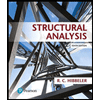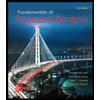Three solid cylindrical rods are welded together to form the compound axial member shown in the figure. The compound axial member is attached to a fixed support at A. Each rod has an elastic modulus of E = 47 GPa. Use the following values for the rod lengths and areas: L₁ = 1350 mm, L₂ = 1760 mm, L3 = 1300 mm, A₁ = 260 mm². A₂ = 155 mm², and A3 = 80 mm². What magnitude of external load P is needed to displace end D a distance of up = 30 mm to the right? Part 1 8₁ F₁ = Part 2 8₂ F₂ A = L₁ (1) mm/kN B L2 Find the relationship between 8₁, the elongation of rod (1), and the internal tensile force, F₁, in rod (1). Assume & is a positive value in units of mm and F, is a positive value in units of kN. So, the answer you enter for the ratio (8₁/F₁) must be in units of (mm/kN). mm/kN (2) C L₂ (3) Similar to the previous step, find the relationship between 2, the elongation of rod (2), and the internal tensile force, F2, in rod (2). Assume 2 is a positive value in units of mm and F2 is a positive value in units of kN. So, the answer you enter for the ratio (82/F₂) must be in units of ( mm/kN). D
Three solid cylindrical rods are welded together to form the compound axial member shown in the figure. The compound axial member is attached to a fixed support at A. Each rod has an elastic modulus of E = 47 GPa. Use the following values for the rod lengths and areas: L₁ = 1350 mm, L₂ = 1760 mm, L3 = 1300 mm, A₁ = 260 mm². A₂ = 155 mm², and A3 = 80 mm². What magnitude of external load P is needed to displace end D a distance of up = 30 mm to the right? Part 1 8₁ F₁ = Part 2 8₂ F₂ A = L₁ (1) mm/kN B L2 Find the relationship between 8₁, the elongation of rod (1), and the internal tensile force, F₁, in rod (1). Assume & is a positive value in units of mm and F, is a positive value in units of kN. So, the answer you enter for the ratio (8₁/F₁) must be in units of (mm/kN). mm/kN (2) C L₂ (3) Similar to the previous step, find the relationship between 2, the elongation of rod (2), and the internal tensile force, F2, in rod (2). Assume 2 is a positive value in units of mm and F2 is a positive value in units of kN. So, the answer you enter for the ratio (82/F₂) must be in units of ( mm/kN). D
Chapter2: Loads On Structures
Section: Chapter Questions
Problem 1P
Related questions
Concept explainers
Question

Transcribed Image Text:Part 3
Similar to the previous step, find the relationship between 83, the elongation of rod (2), and the internal tensile force, F3, in rod (2). Assume
83 is a positive value in units of mm and F3 is a positive value in units of kN. So, the answer you enter for the ratio (83/F3) must be in units of (
mm/kN).
d3
F3
=
Part 4
Choose the correct relationship between the internal tensile forces in rods (1), (2), and (3), denoted F₁, F2, and F3, respectively, and the
applied load, P.
O F₁ = F₂ = F3 = P
O F₁+F₂ + F3 = P
O F₁+F₂ F3 = 3P
O FILI
F2L2 F3L3
+
+
A₁ E A₂E A3 E
Part 5
mm/kN
=
P =
P(L₁ + L₂ + L3)
(A₁ + A2 + A3) E
What magnitude of external load P is needed to displace end D a distance of up = 30 mm to the right?
KN

Transcribed Image Text:Three solid cylindrical rods are welded together to form the compound axial member shown in the figure. The compound axial member is
attached to a fixed support at A. Each rod has an elastic modulus of E = 47 GPa. Use the following values for the rod lengths and areas:
L₁ = 1350 mm, L₂ = 1760 mm, L3 = 1300 mm, A₁ = 260 mm², A₂ = 155 mm², and A3 = 80 mm². What magnitude of external load Pis
needed to displace end D a distance of up = 30 mm to the right?
Part 1
8₁
F₁
=
Part 2
8₂
F2
A
=
L₁
mm/kN
(1)
B
L2
(2)
Find the relationship between ₁, the elongation of rod (1), and the internal tensile force, F₁, in rod (1). Assume 8, is a positive value in units
of mm and F, is a positive value in units of kN. So, the answer you enter for the ratio (8₁/F₁) must be in units of (mm/kN).
mm/kN
C
L3
(3)
D
Similar to the previous step, find the relationship between 82, the elongation of rod (2), and the internal tensile force, F2, in rod (2). Assume
82 is a positive value in units of mm and F2 is a positive value in units of kN. So, the answer you enter for the ratio (82/F₂) must be in units of (
mm/kN).
P
Expert Solution
This question has been solved!
Explore an expertly crafted, step-by-step solution for a thorough understanding of key concepts.
Step by step
Solved in 6 steps with 1 images

Knowledge Booster
Learn more about
Need a deep-dive on the concept behind this application? Look no further. Learn more about this topic, civil-engineering and related others by exploring similar questions and additional content below.Recommended textbooks for you


Structural Analysis (10th Edition)
Civil Engineering
ISBN:
9780134610672
Author:
Russell C. Hibbeler
Publisher:
PEARSON

Principles of Foundation Engineering (MindTap Cou…
Civil Engineering
ISBN:
9781337705028
Author:
Braja M. Das, Nagaratnam Sivakugan
Publisher:
Cengage Learning


Structural Analysis (10th Edition)
Civil Engineering
ISBN:
9780134610672
Author:
Russell C. Hibbeler
Publisher:
PEARSON

Principles of Foundation Engineering (MindTap Cou…
Civil Engineering
ISBN:
9781337705028
Author:
Braja M. Das, Nagaratnam Sivakugan
Publisher:
Cengage Learning

Fundamentals of Structural Analysis
Civil Engineering
ISBN:
9780073398006
Author:
Kenneth M. Leet Emeritus, Chia-Ming Uang, Joel Lanning
Publisher:
McGraw-Hill Education


Traffic and Highway Engineering
Civil Engineering
ISBN:
9781305156241
Author:
Garber, Nicholas J.
Publisher:
Cengage Learning